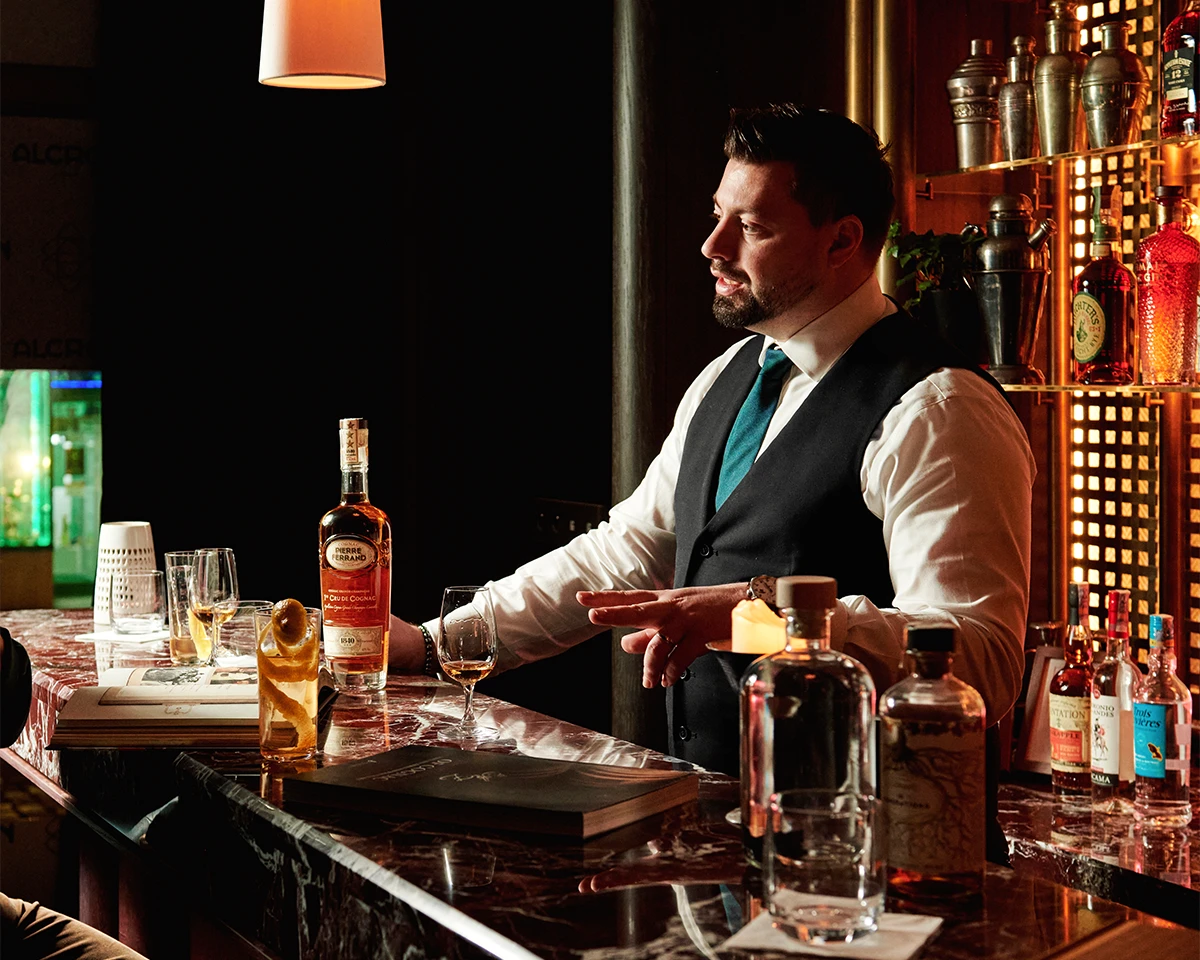Ahead of us is another session in the series of regular meetings with bar literature expert Tomáš Mozr!
On November 25th, another Books & Booze will take place, this time on the theme There’s Whisky and There’s Whiskey.
When looking at the category known as whisky – or whiskey – it may seem surprisingly easy to lose your way on the journey toward the perfect dram. It’s all too simple to get tangled in a web of dogmas, half-truths, and myths surrounding not only the production and history but also the very act of enjoying whisky. Yet, these misconceptions are gradually fading away. At the same time, however, the rules that once seemed firmly tied to this spirit are no longer as unshakable. What first appeared to be a passing swing of the pendulum has now proven to be something deeper. Experts generally agree that we are witnessing an evolution — one that reshapes our perception of what whisky truly is in terms of taste, craftsmanship, sustainability, occasion, and consumption. This means that definitions are inevitably shifting — and, in fact, the change is already underway. This November, Books & Booze will be dedicated to this iconic category that transcends continents. The odyssey begins.
Whisky is a drink with a history spanning more than 500 years, while the evolution of its name can be traced back nearly twice as far. Over the centuries, this spirit has experienced numerous ups and downs, proving just how remarkably alive and dynamic it truly is. From its slow rise, through its peak popularity at the turn of the 19th and 20th centuries, to the near crisis of the distilling industry in Scotland and Ireland during the 1970s and 1980s. Over the past 15 years, however, the entire category has undergone significant transformation – and not only due to new producers seeking to set themselves apart from the established mainstream. On the contrary, even the major players have realized that if they wish to stay in the game, they must adapt parts of their portfolios to these changing times.
Today, whisky is available in a wide range of styles and flavors, satisfying not only those who are just beginning to explore the world of grain spirits but also the most discerning connoisseurs. Suddenly, we’re seeing a series of peated whiskeys from Ireland, whiskies aged in barrels previously used for different types of beer, and in the United States, whiskey has long been produced far beyond the borders of Kentucky. It’s therefore no surprise that global whisky consumption has increased by more than 20% over the past 15 years.
One of the most visible changes in recent years is the fact that the traditional whisky-producing countries — such as Scotland, Ireland, the United States, and Canada — have been joined by producers from former British colonies, led by India, Australia, and New Zealand. Just ten years ago, for example, the concept of “Czech whisky” practically didn’t exist. In Europe, the most significant new player is undoubtedly France, followed by producers from Belgium and Sweden. Somewhere in between, serving as a bridge between the established and the emerging whisky-making nations, stands Japan, with its century-long tradition of whisky production.
When we turn our attention to American whiskey, it’s clear that the younger generation has rediscovered the drink of their grandfathers. Several factors highlight the ongoing transformation in the world of American whiskey, one of the most notable being the growing number of distilleries across the United States. Regional craft distilleries have truly reignited consumer interest in whiskey of all kinds. In 2006, there were only 76 distilleries scattered across the country. By 2023, according to the American Distilling Institute, that number had risen to 2,283.
Did you know that there’s currently a growing trend called white whiskey? In essence, it’s moonshine — the traditional American spirit once produced “by moonlight,” or rather under the cover of night, to help its makers avoid unwanted attention from authorities, whether due to taxes or the era of Prohibition. The decline of this homemade craft was noted in 1979 by reporter Timothy McNulty, who pointed out that general knowledge of moonshine production was fading as quickly as the shadows deepening in the woods at dusk. The truth is, the 1970s — and, in fact, much of the 20th century — were far from prosperous times for moonshine in the Appalachian Mountains and other rural regions of the United States. However, the tables turned around the turn of the millennium. As proof, by 2017 at least 137 distilleries were producing unaged corn whiskey, which they began to market and sell as moonshine. The return of moonshine production and consumption has clearly taken on a whole new dimension.
You will also have the opportunity to taste some cocktails supported by the brands: Arran, Nikka.
You will learn about this and much more when you join us on November 25, 2025!
Tomas and the Alcron Bar team will welcome guests from 17:00 and from 19:00.
Everyone who wants to explore the secrets of the world of cocktails and bar culture is cordially invited, and this unique event is open to everyone for FREE! And that’s why you really shouldn’t miss this event!
Will you take part in six of the twelve themed evenings? You will then become a unique member of the “Friends of Alcron” group and look forward to surprises.
For the reservation, please click here.
